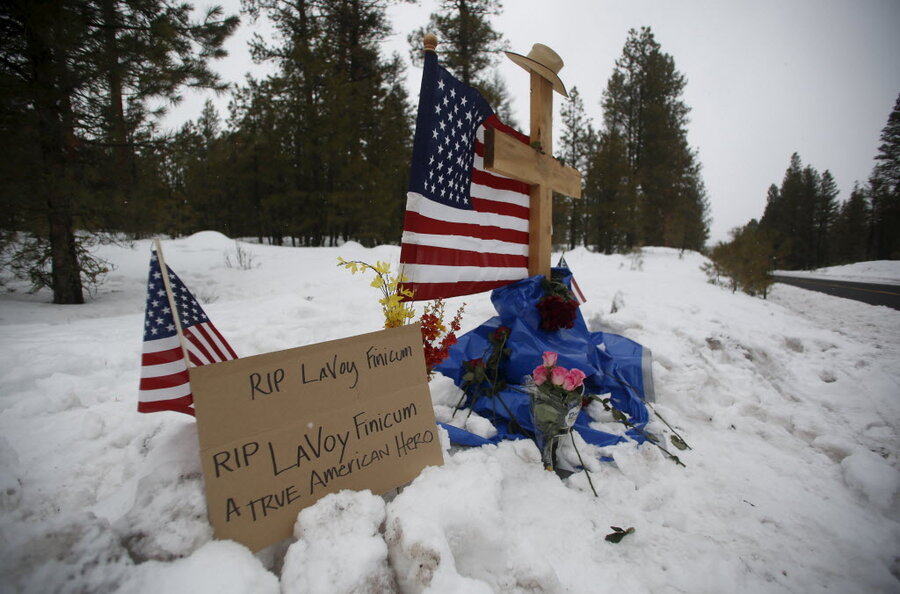Is Burns, Ore., getting back to normal?
Loading...
After the armed militia standoff ended in gunfire last week, the people of Burns, Oregon just want to everything to get back to normal.
“We just want to go back to the way we were,” Barbara Ormond, a small business owner in downtown Burns, told the Chicago Tribune. “We want everyone to leave us alone.”
The group’s leader, Ammon Bundy, was arrested along with 10 others Tuesday, but four occupiers remain in Malheur Wildlife Refuge. What began as an organized protest of federal land-use policies by fewer than 100 people remains a polarizing issue in a city of almost 3,000.
“It’s tearing the community apart,” Bonnie Angleton, who owns a gift shop in downtown Burns, told the Chicago Tribune. “I care about the people who live here.”
Dauna Wensenk, city manager in Burns, told the Bend, Ore., Bulletin that the community has been forced to split in two: government supporters and occupation supporters. She says that some friends are not friends anymore.
During Bundy’s arrest by Oregon State Police and FBI officials in a traffic stop Tuesday evening, the group’s spokesman, LaVoy Finicum, was fatally shot. Police say he had been reaching for a loaded handgun in his pocket.
Finicum’s death has sparked outrage among his movement's sympathizers, who say that that he was needlessly killed by the government. To counter claims in Burns of Finicum’s innocence, the FBI released a video of the shootout Thursday.
In the video, Finicum gets out of the vehicle with his hands up and then reaches into his pocket at least twice before he is shot. After Finicum was killed, authorities say they found a loaded gun in his pocket.
“It is absolutely another dividing line with one side saying it was coldblooded murder and the other side saying it was completely justified,” Linsay Tyler, a rancher born and raised in Burns, tells The New York Times. “It was a community divided throughout the whole occupation, but now it’s even more divided. Families are being torn apart, friendships are being ended – it’s a nightmare.”
And especially after Finicum’s death, "normal" may not be possible anymore.
“The risk here is that you had people who were basically perceived by the public as clowns, and now an incident like this can shift that perception and give them what they wanted, which is the status of martyr and victim,” former FBI agent Michael German told The Christian Science Monitor Wednesday.
Residents who oppose the occupiers say that the real victims are federal employees in the area who have to clean up the occupation’s aftermath. Local artist Kate Marsh said many residents work for the government, and they have financially suffered from the occupation.
While its clear how federal employees in the area suffer financially, even those not taking sides are feeling the heat.
Linda Gainer owns a restaurant six miles from the refuge, and has received public criticism for serving food to everyone involved in the standoff, from occupiers to FBI agents.
“People say that we’re unpatriotic, we’re terrorists,” Ms. Gainer tells The New York Times.
Instead of focusing on issues that plague all middle-class farmers, government employees and small business owners in the area, the occupation “disrupted a community, created more conflict, and polarized people,” Merrill Beyeler, a Republican state lawmaker and Idaho rancher, told The Monitor’s Patrik Jonsson. “But that’s my frustration with everything that’s gone on this last month – I think it’s a distraction from where attention should be.”








